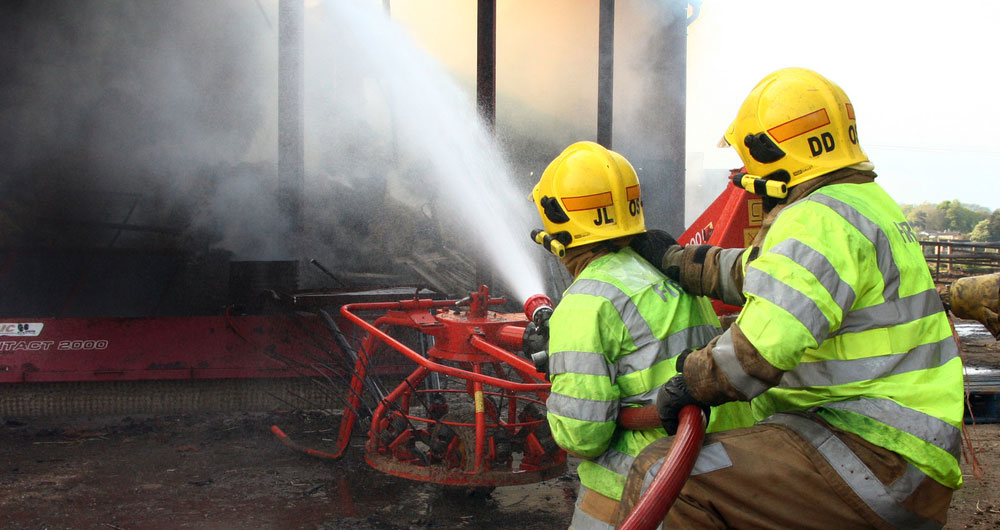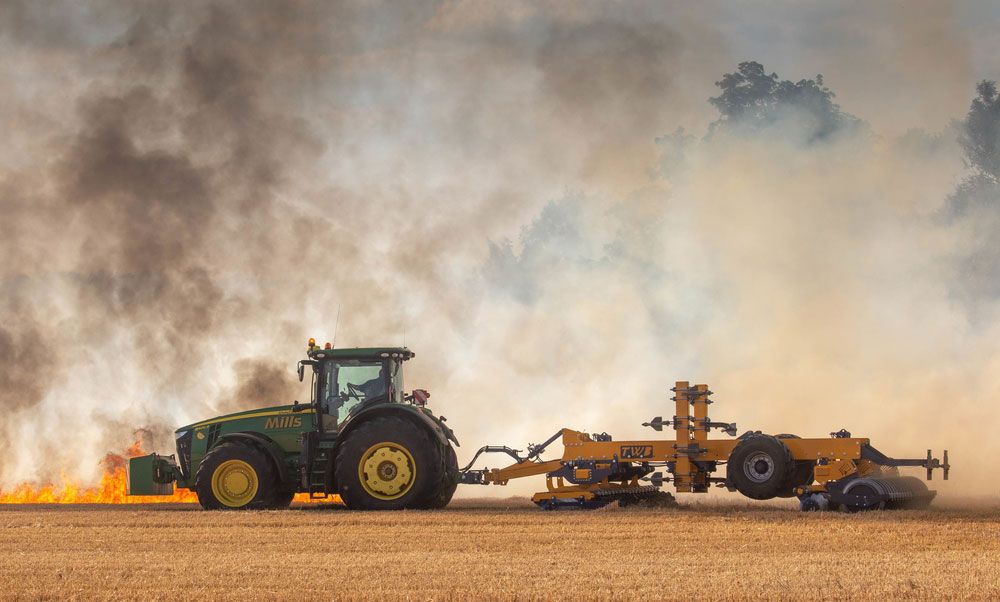On one day alone in 2018, Lincolnshire Fire Service dealt with 12 combine fires. Jason's message to farmers is to be proactive and above all never to be complacent about the risk of fire on farm.
He says:
"All farms are covered by fire safety legislation and must carry out a fire risk assessment. There is a lot of help and advice online and most fire services will have template assessment forms on their website that can be used by farmers.
"If the worst happens and there is a fire, having an emergency plan and staff trained on what to do is important.
"If you need to call the fire service, ensure your directions are clear to where any fire is. The What3Words app is used by most fire services and can make a real difference in getting fire engines to the right place quickly.
"Having information to hand in a folder with farm plans, details of dangerous substances such as chemicals and fertiliser and how to access water supplies is vital."
“My number one piece of advice is that no matter what happens the priority is always protecting life. Only attempt to fight a fire when it is safe to do so.”
How to prevent a combine fire
Most combine fires can be prevented or limited by:
- Regularly cleaning out dust and chaff from hot spots in combines and balers. Switch off engines and ensure moving parts have stopped before clearing blockages or carrying out maintenance.
- Always stopping to investigate hot-running engines, bearings, or wisps of smoke.
- Making sure there is a fire extinguisher on the combine – and that it is regularly maintained. If there is a fire in a combine and an extinguisher does not put it out in 20 to 30 seconds, then it is time to move to safety and make way for the fire service.
Fire risk assessment
The fire risk assessment has five steps:
1. Identify hazards. These could be sources of ignition such as welding or grinding equipment. Look for sources of fuel. These can be anything that burns, from hay to petrol. Dangerous substances such as chemicals, fertiliser and asbestos must be identified as well.
2. Identify people at risk. These include people who work for you, visitors, children and other vulnerable people, and fire fighters who respond to an emergency.
3. Evaluate the risk of fire occurring and the risk to people. Wherever possible remove or reduce fire hazards. This could be by installing smoke and fire alarms, firefighting equipment and identifying escape routes.
4. Record significant findings and actions you have taken. Prepare an emergency plan. Inform and instruct anyone who might be affected and provide training.
5. Review the assessment on a regular basis to make sure it is up to date.
More advice on how to keep safe from NFUonline:

